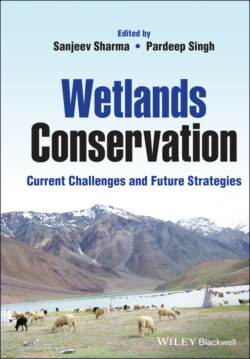Читать книгу Wetlands Conservation - Группа авторов - Страница 35
2.7.6 Three Pillars of Ramsar Convention
ОглавлениеThe idea of “three pillars” holds great significance for the strategic plans of the Ramsar Convention as the majority of the convention’s work is organized around these pillars (Figure 2.5). The idea of three pillars was introduced during the first strategic plan in 1997 and further recognized in the third Strategic Plan (2009–2015). The three pillars of the Ramsar Convention are:
Figure 2.5 Three pillars of the Ramsar Convention.
1 The “Wise‐use of Wetlands” has been identified as the first pillar of the Ramsar Strategic Plan. Its aim is to promote the conservation of wetlands through sustainable use of their services through actions like establishing national wetland policies; harmonizing the framework of laws and financial instruments affecting wetlands; undertaking inventory and assessment; ensuring public participation in wetland management and the maintenance of cultural values by local communities and indigenous people; promoting communication, education, participation, and awareness; and increasing private sector involvement (Matthews 1993; Ramsar Convention Secretariat 2011, 2016).
2 The second pillar is the identification of wetlands for their inclusion in the “List of Wetlands of International Importance.” This helps in the identification, designation, and management of a comprehensive global network of Wetlands of International Importance (the Ramsar List) and ensures their effective conservation and management (Matthews 1993; Ramsar Convention Secretariat 2011, 2016).
3 “International Cooperation” for conservation and wise‐use of wetlands has been identified as the third pillar of the strategic plan. This is particularly useful in the case of conservation and management of transboundary wetlands and the species harbored by them. This highlights the need for collaboration between different member nations, conventions as well as international organizations for easy flow of information and expertise, and sharing of financial resources, etc. (Matthews 1993; Ramsar Convention Secretariat 2011, 2016).
